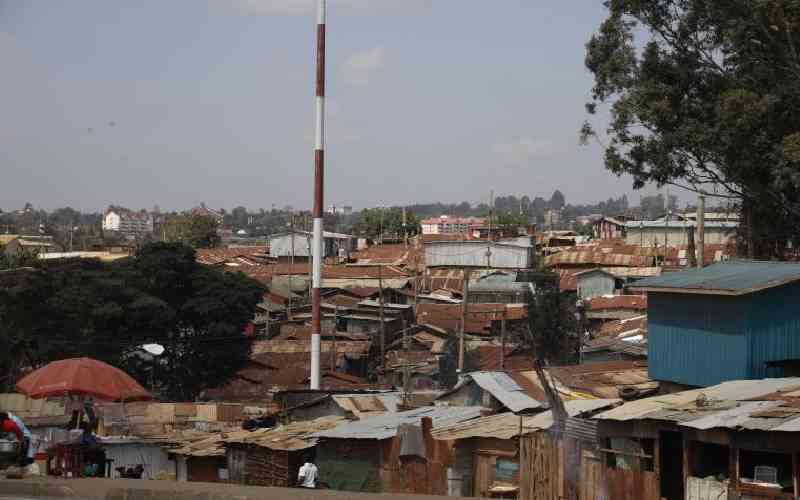
NAIROBI, KENYA: Nations failing to invest in health and education are at risk of stagnating economies and lower per capita GDP, according to a study ranking countries for their levels of human capital.
“Our findings show the association – between investments in education and health and improved human capital and GDP – that policymakers ignore at their own peril,” said Dr. Christopher Murray, director of the Institute for Health Metrics and Evaluation (IHME) at the University of Washington. “As the world economy grows increasingly dependent on digital technology, from agriculture to manufacturing to the service industry, human capital grows increasingly important for stimulating local and national economies.”
The World Bank President, Jim Yong Kim, defines human capital as “the sum total of a population’s health, skills, knowledge, experience, and habits.” Kim has stated that measuring and ranking countries by their human capital will enable comparisons over time, thereby providing governments and investors’ insights into where critical investments are needed to improve health and education. Last year, he asked IHME to develop such a measurement.
“Measuring and ranking countries by their level of human capital is critical to focus governments’ attention on investing in their own people,” Kim said. “This study from IHME is an important contribution to the measurement of human capital across countries and over time.”
The study, “Measuring human capital: A systematic analysis of 195 countries and territories, 1990–2016,” was published in the international medical journal The Lancet. It is based on a systematic analysis of an extensive array of data from numerous sources, including government agencies, schools, and health care systems.
In addition to Kim, the leader of the World Health Organisation also believes the IHME paper provides important insights on human capital. "Investing in people rather than primarily in infrastructure is the best way to achieve sustainable development, and investments in human capital through health and education offer compelling returns,” said Dr Tedros Adhanom Ghebreyesus, WHO Director-General. “This study is a valuable contribution to the evidence base we need to inform the debate."
The study places Finland at the top. Turkey showed the most dramatic increase in human capital between 1990 and 2016; Asian countries with notable improvement include China, Thailand, Singapore, and Vietnam. Within Latin America, Brazil stands out for improvement. All these countries have had faster economic growth over this period than peer countries with lower levels of human capital improvement.
In addition, the greatest increase in human capital among sub-Saharan African countries was in Equatorial Guinea. Some of the world’s most rapid improvements were in the Middle East, including Saudi Arabia and Kuwait.
Kenya’s human capital ranked 139 out of 195 countries in 2016, falling slightly from #137 in 1990. Kenya places ahead of Botswana, South Africa, Tanzania, Uganda, and Ethiopia. Gabon was the highest scoring country in sub-Saharan Africa at #118. On the health component of the study, Kenya has shown improvement since 1990. The study looks at how many years between the ages of 20 and 65 – when people are most active in the workforce – they can expect to live. On average, Kenyans lived 38 of those 45 years, while in 1990, Kenyans lived on average 35 years. But Kenya has not improved as quickly as other nations, and it is ranked only #153 in the world in terms of years workers can expect to live.
The study’s measure of functional health – which calculates the work impact of ailments like stunting, hearing and vision loss, or infectious diseases like malaria or tuberculosis – ranked Kenya at #146 in the world. Kenya scored better than Tanzania, Ethiopia, Uganda, and South Sudan, and just below South Africa.
Kenyan workers receive more education than they did in 1990. In 2016, Kenyans spent about 11 years out of a possible 18 years measured in the study. Kenya rose 16 places since 1990 in terms of years spent in school; the country ranks #111 in the world. But quality of education in Kenya is lagging. While Kenya has shown improvement since 1990 and now outranks countries like Uganda, Tanzania, Rwanda, and Ethiopia in terms of education quality, it is still only #157 in the world.
Over the past quarter century, there has been limited progress in building human capital in selected countries that started at a high baseline. The US was ranked sixth in human capital in 1990 but dropped to 27th in 2016 due in part to minimal progress in educational attainment, which dropped from 13 to 12 years during that time.
Health and education advocates, economists, and others should use the findings as evidence to argue for greater attention to – and resources for – improving their nations’ human capital.
“Underinvesting in people may be driven by lack of policy attention to the levels of human capital,” Murray said. “No regular, comparable reporting across all countries on human capital currently exists. Such reporting over the next generation – as a way to measure investments in health and education – will enable leaders to be held accountable to their constituents.”
Stay informed. Subscribe to our newsletter
Researchers found that nations with greater improvements in human capital also tend to have faster growth in per capita GDP. Countries in the highest quartile of improvements in human capital between 1990 and 2016 had a 1.1 percent higher median yearly GDP growth rate than countries in the bottom quartile of human capital improvements. For example, between 2015 and 2016, a 1.1 percent increase in the GDP growth rate in China equates to an additional $163 per capita; in Turkey, $268 per capita; and in Brazil, $177 per capita.
The study focuses on the number of productive years an individual in each country can be expected to work between the ages of 20 to 64, taking into account years of schooling, learning in school, and functional health. The calculation is based on a systematic analysis of 2,522 surveys and censuses providing data on years of schooling; testing scores on language, math, and science; and health levels related to economic productivity.
Major differences in human capital investments are exemplified in the study’s comparison between Japan and Ethiopia.
Japan’s score of 24.1 years of human capital comes from having a life expectancy of 43.9 out of a possible 45 years between the ages of 20 and 64; expected educational attainment of 12.4 out of a possible 18 years in school; and a learning score of 94 and a functional health score of 85, both out of 100. Components measured in the functional health score include stunting, wasting, anemia, cognitive impairments, hearing and vision loss, and infectious diseases such as HIV/AIDS, malaria, and tuberculosis.
Ethiopia, however, despite significant progress, has a human capital score of only 4.7 years, composed of 38 expected years lived from age 20 to 64, educational attainment of 7.3, learning 62, and functional health 49.
 The Standard Group Plc is a
multi-media organization with investments in media platforms spanning newspaper
print operations, television, radio broadcasting, digital and online services. The
Standard Group is recognized as a leading multi-media house in Kenya with a key
influence in matters of national and international interest.
The Standard Group Plc is a
multi-media organization with investments in media platforms spanning newspaper
print operations, television, radio broadcasting, digital and online services. The
Standard Group is recognized as a leading multi-media house in Kenya with a key
influence in matters of national and international interest.
 The Standard Group Plc is a
multi-media organization with investments in media platforms spanning newspaper
print operations, television, radio broadcasting, digital and online services. The
Standard Group is recognized as a leading multi-media house in Kenya with a key
influence in matters of national and international interest.
The Standard Group Plc is a
multi-media organization with investments in media platforms spanning newspaper
print operations, television, radio broadcasting, digital and online services. The
Standard Group is recognized as a leading multi-media house in Kenya with a key
influence in matters of national and international interest.









